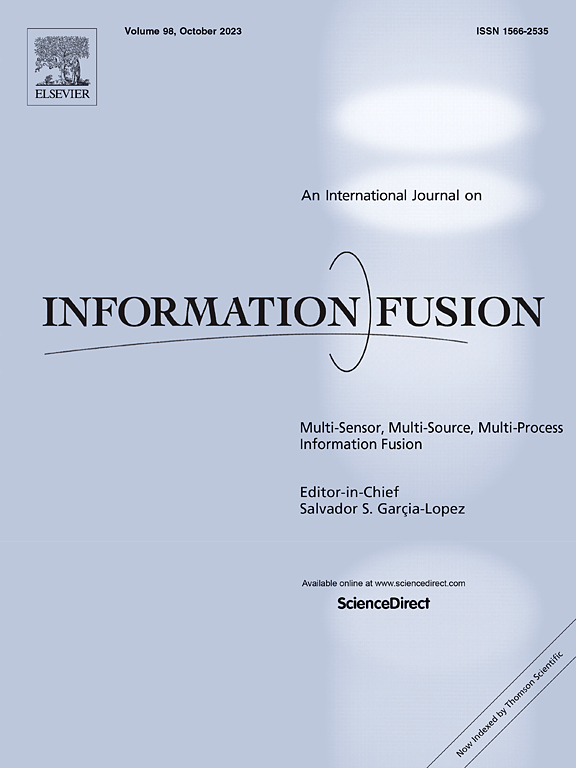Metric learning-enhanced semi-supervised Graph Convolutional Network for multi-view learning
IF 15.5
1区 计算机科学
Q1 COMPUTER SCIENCE, ARTIFICIAL INTELLIGENCE
引用次数: 0
Abstract
Multi-view learning utilizes data from diverse perspectives or modalities, integrating complementary information from various sources. It plays a crucial role in intelligent systems and finds extensive applications in fields such as computer vision, recommender systems, and natural language processing. With the increasing complexity and heterogeneity of real-world data, the integration of Graph Convolutional Networks (GCNs) in multi-view learning scenarios is becoming increasingly important. Despite the advances in GCNs, it remains a major challenge to effectively generalize models and improve their stability across different data views. In this paper, we present a novel framework, the Enhanced Triplet Loss Based Semi-Supervised Graph Convolutional Network for Multi-View Learning (MV-TriGCN), which addresses these challenges through three primary innovations. First, we propose an enhanced triplet loss for deep metric learning tailored to the hidden features of GCNs based on semi-hard negative sample selection. Second, view graphs are constructed using the classical KNN scheme and a semi-supervised flexible method to improve the diversity of data structure representation resulting in a more stable hypothesis space. Moreover, we learn an end-to-end multi-view GCN by merging all available graphs and utilizing the aggregated cross-entropy losses and deep metric losses. Finally, we introduce a stepwise training strategy that allows the model to adapt to the losses during different optimization phases. Extensive experiments show that our method outperforms existing state-of-the-art approaches in terms of accuracy and stability.1
多视图学习的度量学习增强半监督图卷积网络
多视角学习利用来自不同角度或模式的数据,整合来自不同来源的互补信息。它在智能系统中起着至关重要的作用,在计算机视觉、推荐系统和自然语言处理等领域有着广泛的应用。随着现实世界数据的复杂性和异构性的增加,图卷积网络(GCNs)在多视图学习场景中的集成变得越来越重要。尽管GCNs取得了进步,但有效泛化模型并提高其跨不同数据视图的稳定性仍然是一个主要挑战。在本文中,我们提出了一个新的框架,即基于增强三重损失的半监督图卷积网络用于多视图学习(MV-TriGCN),它通过三个主要创新来解决这些挑战。首先,我们提出了一种基于半硬负样本选择的增强三重损失深度度量学习方法,该方法针对GCNs的隐藏特征进行了定制。其次,利用经典KNN方案和半监督柔性方法构造视图图,提高数据结构表示的多样性,从而获得更稳定的假设空间;此外,我们通过合并所有可用图并利用聚合的交叉熵损失和深度度量损失来学习端到端多视图GCN。最后,我们引入了一种逐步训练策略,使模型能够适应不同优化阶段的损失。大量的实验表明,我们的方法在准确性和稳定性方面优于现有的最先进的方法
本文章由计算机程序翻译,如有差异,请以英文原文为准。
求助全文
约1分钟内获得全文
求助全文
来源期刊

Information Fusion
工程技术-计算机:理论方法
CiteScore
33.20
自引率
4.30%
发文量
161
审稿时长
7.9 months
期刊介绍:
Information Fusion serves as a central platform for showcasing advancements in multi-sensor, multi-source, multi-process information fusion, fostering collaboration among diverse disciplines driving its progress. It is the leading outlet for sharing research and development in this field, focusing on architectures, algorithms, and applications. Papers dealing with fundamental theoretical analyses as well as those demonstrating their application to real-world problems will be welcome.
 求助内容:
求助内容: 应助结果提醒方式:
应助结果提醒方式:


